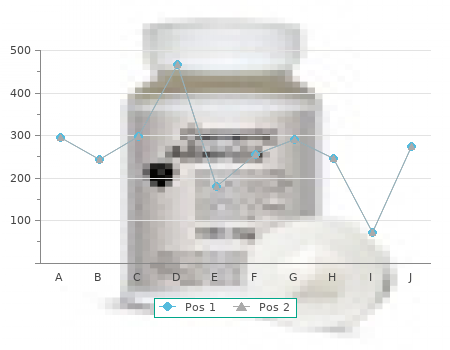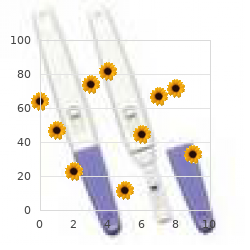Zithromax
In reminding perhaps an occasional hemorrhoid discount zithromax 500mg line infection home remedy, skin cyst or His Royal Highness the Duke of Edinburgh that bunion just to give verisimilitude to the otherwise the last royal sponsor of the College had been unconvincing title of “general cheap 250 mg zithromax fast delivery ucarcide 42 antimicrobial. Then for some Prince Philip at once replied “I am bloody years his expert surgical technique was applied to grateful. He next Perhaps the most happy of all our memories is engaged in neurosurgery and soon became a the hospitality of his home. We will 231 Who’s Who in Orthopedics preserve these memories with Lady Mercer and served as a prototype for many of the outpatient her son David. Metcalf joined the faculty at the University of Utah and was appointed Professor of Orthopedic Surgery in 1983. He gave hundreds of presentations on arthroscopy, nationally and internationally. Although he was not a prolific writer, Bob was responsible for several important publications in his field. He was a member of many societies, serving on many committees of the American Academy of Orthopedic Surgeons and as president, in 1984, of the Arthroscopy Association of North America, to name a few. He contributed immensely to the Orthopedic Research and Education Foundation, serving as chairman for the State of Utah from 1980 to 1983. He was also active in the Western Orthopedic Association and the Utah State Medical Associa- tion. Sports Medicine” by the American Orthopedic Society of Sports Robert William METCALF Medicine in 1983. His tremendous and graduate education at the University of Utah personal efforts and organizational skills were and received a Doctor of Medicine degree in apparent each year. After 2 years of postgraduate training in ingly successful; with a total registration of 9,325 general surgery, he spent 2 years in the United orthopedic surgeons, they represent a unique edu- States Army. It was the continu- of Utah to complete his orthopedic residency, ing credibility of Bob Metcalf that brought new before entering a career that would ultimately and returning registrants to the seminars. They had ten chil- Utah, and became very active in sports medicine dren, to whom he devoted a major portion of his as the team physician for Brigham Young Uni- life. At his seminars, the children were apparent versity, a position that he held for more than 10 everywhere, helping him with details. During that time, he cared for and influ- It might be that Robert Metcalf’s greatest enced many outstanding young athletes. He was a devoutly religious man, intensely interested in arthroscopy, and this having been a bishop in the Church of Jesus pursuit profoundly affected the rest of his profes- Christ of Latter-Day Saints. After joining the individuals who were the tenets in which he believed, he was continu- pioneering this adolescent discipline, his zeal ously involved in missionary work throughout the became readily apparent, and his natural talent as world. Four of his sons also completed a 2-year, an educator allowed him to have an influence on full-time mission for the Latter-Day Saints. He was at a meeting of the Inter- 232 Who’s Who in Orthopedics national Arthroscopy Association in Toronto death, was honored by election as Membre when he was suddenly stricken with a myocardial d’Honeur, Société Française d’Orthopédie et de infarction, and he died 2 weeks later, after return- Traumatologie. His contributions comprised in papers and books reflect his broad interests in orthopedics. He described the syndrome of ischial epiphysitis, bone changes in Gaucher’s disease, and the entity which, when fully outlined, became osteoid osteoma. He pioneered in the study of bone form by means of photoelastic stress analysis, urged cross-union in the treatment of tibial pseudarthro- sis, and discussed the effects of resection of the distal end of the ulna and cuff resection of the ulna. He studied dislocations of the head of the radius, of the metacarpophalangeal joint of the thumb, of the distal end of the ulna, and of the temporo- mandibular joint; he investigated anomalous instabilities of the elbow, shoulder and hip joints and sought to restore joint stability, devising pro- cedures for the reconstruction of the deltoid liga- ment in pronated flat foot, for repair of the tibial collateral ligaments of the knee, for correction of the buttonhole rupture of the finger extensors, and for reinforcement of the unstable metacarpopha- Henry MILCH langeal joint of the thumb. He studied the signif- 1895–1964 icance of localized cruciate ligament loss. Milch was born in New York City, December him; he wrote on rotation osteotomy of the ulna 20, 1895, the son of Jacob Milch. He was edu- for pronation contracture of the forearm and on cated at Columbia College and served as a lieu- extension osteotomy of the femora for alignment tenant in the infantry in World War I. He received of the severely flexed trunk in spondylitis his medical education at the Columbia College of ankylopoetica. Physicians and Surgeons, interned at the Mount An avid mathematician since college days, he Sinai Hospital in New York, spent a year abroad never ceased being interested in mathematical studying pathology and returned to be an adjunct analysis of alignment disturbances. In 1927 he of the long bones, especially at the upper end of married Pearl Salzberg. He was survived by his the femur, occupied much of his time in later wife, his daughter June Ruth Dubow, his son years.

Furthermore purchase zithromax 250mg line antibiotics for uti feline, his physician’s office manager argued generic zithromax 100mg online antibiotic resistance uk, “How are we to know if you really need a new chair or if the current chair can still be fixed? If we were to write the prescription, and you do not really need a new chair, we could be subject to claims of health care fraud” (1999, 176). Finally, the office man- ager admitted, “Do you know how much this new wheelchair will cost? The company has a right to decide whether a new chair is needed or whether the current chair can be repaired” (179). Batavia reminded her that his 20 percent copayment made him well aware of the cost. My initial theory about why my PPO refused to purchase the new chair related to economics. Although the PPO is willing to pay for repairs, the amount it authorizes for them is quite limited. Therefore, I must pay the difference between the amount charged by my wheelchair repair What Will Be Paid For? Because I pay the majority of the repair bill, it is obviously in the interest of the PPO not to pay for a new chair. Its liability for ongoing repairs is rela- tively small compared with the large cost of a new chair.... After I fought with the PPO for two more months, it finally ap- proved purchase of the chair. Unfortunately, the PPO approved pay- ment of only $16,000, about two-thirds of the chair’s actual cost. People with progressive chronic conditions face an additional problem, since insurers typically pay for only one piece of equipment per enrollee’s lifetime (or time with the insurance) or—as Medicare and Medicaid do— for one piece every five years. Therefore, if debilities are increasing, people must think ahead to their needs a year or two hence and purchase equip- ment anticipating the worst. This situation is also very difficult financially and psychologically, as the occupational therapists noted during their focus group. You can work toward getting out of the wheelchair to a walker, but you’re going to have to buy the walker. You can then work to- ward using a cane, but you’re going to have to buy the cane. But because of the progression of her disease, a scooter is not the answer. Medicaid is only going to pay for one mobility aid for the next five years, and she’s not going to be in a scooter for the next five years. It was really tough to get her to accept that wheelchair rather than a scooter because that’s looking long- term down the road. By the time she applied, her MS had progressed significantly; with her doctor’s prescription, the scooter approval process went smoothly. Jones believes that her training as a social worker helped: “It’s being edu- cated in how things work. I always have worked with people who are cowed by the system before they’d even try it. My partner called them time after time after time because I’d get so angry. In either case, only the educated, sophisticated consumer is likely to succeed. Others will prob- ably be worn down by the process, and many will simply give up. The cyn- ical among us would argue that this is the purpose of the process” (1999, 182). The medical director of a large western health insurer finds that only certain people appeal denials: “Educated people clearly have more technical knowledge and are more assertive than the nontechnical folks. They usually have others state their case— not necessarily a lawyer, but that’s often who it is. Johnny Baker was Erna Dodd’s primary care physician and dreads the time consumed by applying for equipment and appealing denials. Baker, who works in an academic practice with social workers readily available. Winnie Dowd, a physical therapist, finds that sometimes physicians provide inadequate help.

There have been few studies comparing the efficacy of these drugs in the treatment of neonatal seizures zithromax 100 mg online i need antibiotics for sinus infection. Typical initial doses of the first-line drugs are provided in Table 3 buy generic zithromax 250 mg online infection knee joint, and additional discussion of the individual drugs is given below. Phenobarbital: Phenobarbital affects GABAA receptors to enhance GABA- related inhibition. It may also inhibit excitatory amino acid transmission and block voltage-activated calcium currents. Phenobarbital is subject to protein binding, and it is the unbound (free), unionized fraction that is active. Alterations in acid–base balance in the newborn may impact efficacy of the drug for this reason. Its half-life is long, from 100 to 300 hr, or longer in prema- ture infants, but declines to 100 hr or less over the first weeks of life. An initial intra- venous (IV) loading dose of 20 mg=kg may be followed by increments of 5–10 g=kg IV to a total of 40 g=kg, with higher doses associated with improved efficacy. Careful monitoring of cardiac and respiratory function may be required in vulnerable infants. Table 3 Anticonvulsant Drug Doses for Initial Management of Neonatal Seizures Drug Initial dose Maintenance Phenobarbital 20 mg=kg IV. Consider further Check drug levels—may not need 5–10 mg=kg increments to a further doses for many days. This decreases the tendency of neurons to high frequency, repetitive firing and therefore their excitability. High lipid solubility results in rapid entry to the brain, but it is quickly redistributed and levels decline, requiring continued administration to restore brain levels. It is protein bound, though to a lesser degree in newborns than in older chil- dren and adults. Its half-life varies with concentration, increasing with higher concentrations due to decreased clearance as levels increase. An intravenous loading dose of 20 mg=kg of phenytoin administered at no greater than 1 mg=kg=min (to avoid cardiac arrhyth- mia and hypotension) is followed by a maintenance dose of 2–3 mg=kg=day IV divided between 2 and 4 doses. Its advan- tages are its higher water solubility and lower pH, which, in addition to the lack of toxic vehicles required for its formulation, reduce local irritation of skin and blood vessels at the site of infusion. Fosphenytoin is converted to phenytoin by plasma phosphatase enzymes in neonates as in adults. Benzodiazepines: Diazepam and lorazepam, like other benzodiazepines, bind to the postsynaptic GABAA receptor to enhance GABA-activated inhibitory chloride currents. At high levels, benzodiazepines may also influence voltage-gated sodium channels and calcium channels. Differential lipid solubility confers some advantage on lorazepam, which is less lipid-soluble and therefore is not redistributed away from the brain as rapidly as is diazepam. Benzo- diazepines are metabolized in the liver, and the majority of the drug is excreted in the urine. The plasma half-life of both lorazepam and diazepam is approximately 30 hr, and may be longer in premature and=or asphyxiated newborns. Onset of action is within minutes for both drugs, however, duration of action is longer for lorazepam (up to 24 hr). Benzodiazepines are usually used as sec- ond- or third-line agents in neonatal seizures, but may also be used as an initial treat- ment for their earlier onset of action, in anticipation of the effect of a concurrent dose of phenobarbital. Other Anticonvulsants: Upward of 90% of neonatal seizures will be controlled by the combined use of the above anticonvulsant medications. Many other drugs have been used in an attempt to control refractory cases. Support for their use is based on reports of efficacy in small, uncontrolled series. Midazolam is a short-acting benzodiazepine that has been used as a continuous IV infusion (0. Lidocaine has been used, mostly in Europe, as an IV infusion of 4 mg=kg=hr with decreasing doses over 4–5 days.
In practice a pillow under the lumbar spine to preserve normal lordosis is sometimes used zithromax 250 mg on-line 775 bacteria that triple every hour. Dislocations of the thoracic and lumbar spine may sometimes be reduced by this Figure 5 purchase zithromax 250mg with mastercard treatment for dogs galis. Right: incorrect traction—too great a weight and recommended in some patients with unstable fracture- head in extension—leading to distraction with neurological dislocations to prevent further cord or nerve root damage, deterioration. As yet there is no convincing evidence that internal fixation aids neurological recovery. Transfer to a spinal injuries unit In the United Kingdom, there are only 11 spinal injuries units and most patients will be admitted to a district general hospital for their initial treatment. Immediate transfer is ideal, as management in an acute specialised unit is associated with reduced mortality, increased neurological recovery, shorter length of stay and reduced cost of care, compared to treatment in a non- Box 5. The objects of management are to prevent • To prevent further spinal cord damage by reduction and further spinal cord damage by appropriate reduction and stabilisation of spine stabilisation of the spine, to prevent secondary neuronal injury, • To prevent secondary neuronal injury and to prevent medical complications. Unfortunately, some patients will not be fit enough for immediate transfer because of Box 5. In such cases it is advisable to consult, and perhaps arrange a visit by, a Patient unfit to transfer—multiple injuries —need for emergency surgery spinal injuries consultant. Transfer to a spinal injuries centre is —severe respiratory impairment most easily accomplished by means of a Stryker frame, which —cardiorespiratory instability can be fitted with a constant tension device for skull traction. Consider visit by spinal injuries consultant The RAF pattern turning frame is similarly equipped and was specifically developed for use by the Royal Air Force. In civilian practice, studies have shown that patients can be safely transferred from emergency departments using the standard 23 ABC of Spinal Cord Injury techniques for cervical immobilisation described earlier. Tetraplegic patients should be accompanied by a suitably experienced doctor with anaesthetic skills, who can quickly intubate the patient if respiratory difficulty ensues. Transfer by helicopter is often the ideal and is advisable if the patient has to travel a long distance. Spine 1993; 18:955–70 • Tator CH, Duncan EG, Edmonds VE, Lapczak LI, Andrews DF. Neurological recovery, mortality and length of stay after acute spinal cord injury associated with changes in management. Amsterdam: Elsevier Science Publishers, 1992 24 6 Medical management in the spinal injuries unit David Grundy, Anthony Tromans, John Carvell, Firas Jamil Management of spinal cord injury in an acute specialised unit is associated with reduced mortality, increased neurological recovery, shorter length of stay and reduced cost of care, compared to treatment in a non-specialised centre. The cervical spine In injuries of the cervical spine skull traction is normally Box 6. The spine may be positioned in • Skull traction for at least six weeks neutral or extension depending on the nature of the injury. Thus • Halo traction—allows early mobilisation by conversion into halo flexion injuries with suspected or obvious damage to the posterior brace in selected patients ligamentous complex are treated by placing the neck in a degree • Spinal fusion —acute central disc prolapse (urgent decompression of extension. The standard site of insertion of skull calipers need required) not be changed to achieve this; extension is achieved by correctly —severe ligamentous damage positioning a pillow or support under the shoulders. Most injuries —correction of major spinal deformity are managed with the neck in the neutral position. An appropriately sized neck roll can also be inserted to maintain normal cervical lordosis and for the comfort of the patient. The application of a halo brace is a useful alternative to skull traction in many patients, once the neck is reduced. Its use is often necessary for up to 12 weeks, when it can be replaced by a • Widening of gap between adjacent spinous processes cervical collar if the neck is stable. Radiographs are taken vertebral body regularly for position and at six weeks for evidence of bony • Increased angulation between adjacent vertebrae union, immobilisation being continued for a further two to Figure 6. Note forward slip of C4 on C5 and widened interspinous gap, indicating posterior ligament damage. Flexion-extension views show no appreciable movement but a persisting slight flexion deformity at the site of the previous instability. Once stability is achieved the patient is sat up in bed gradually during the course of a few days, wearing a firm cervical support such as a Philadelphia or Miami collar, before being mobilised into a wheelchair.

Zithromax
10 of 10 - Review by C. Ateras
Votes: 164 votes
Total customer reviews: 164 |



